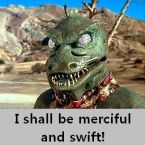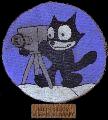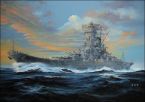Alamander
Posts: 147
Joined: 4/29/2020
Status: offline

|
As the Japanese, you should have a variety of planes. Many of your planes tend to be more maneuverable though less armed (and often slower) than their American counterparts. You depend upon maneuverability to survive dogfights. Pay close attention to the combat reports. What is the detection time on the raids? How long does it take for all fighters to arrive at the intercept point? To what altitude are your CAP fighters scrambling?
In general, you want to keep the battle, so much as possible, in good maneuver bands for your planes. This is not entirely possible, because as raids come in at higher altitudes, fighters will begin to climb, based on their climb rate, to meet the sweepers. However, the sweepers will also dive on your CAP fighters, reducing the altitude to which your fighters will tend to climb.
Low-layered CAP works because your planes do not reach as high an altitude when climbing to meet the sweepers and they must dive lower thus keeping the combats, in general, closer to your best maneuver bands. However, another major advantage of low-layered CAP is that your scrambling fighters do not have to climb as far to meet up with those on patrol. Your forces are less divided. For example, Tojos, with their excellent climb rate, scrambling from the Tarmac will end up linked up with Oscars that started airborne at a low level. Thus you create numbers. It is not simply a question of how many fighters are on CAP; it is a question of how many are in a specific altitude band at the time of the combat. Flying higher creates piecemeal CAP that is chopped up by placing too much altitude between patrolling craft and scrambling craft.
When layering your CAP, you want to take into account maneuverability based on altitude bands, speed, and climb rate. More maneuverable, tends be the lowest layer. Oscars work well for this the entire war if you have done a modest amount of accelerating the chain. They also do not have a great climb rate, so scrambling fighters with a better climb rate can often link up with Oscars on a low station as both climb to meet sweepers. A6M3 or A6M8s also work well in this role. Tojo IIcs can be used as well since on-station aircraft can link up as they climb with those patrolling a higher altitude. Franks, which are fast and maneuverable, can also be used, though it is nice to have them at a high band so that they can dive on sweepers that overshoot their targets or dive on lower-flying aircraft. You get the idea. Use what you have and your diversity of aircraft to create a layered defense that responds, so much as possible, in unison to allied attacks.
|
 Printable Version
Printable Version
















 New Messages
New Messages No New Messages
No New Messages Hot Topic w/ New Messages
Hot Topic w/ New Messages Hot Topic w/o New Messages
Hot Topic w/o New Messages Locked w/ New Messages
Locked w/ New Messages Locked w/o New Messages
Locked w/o New Messages Post New Thread
Post New Thread